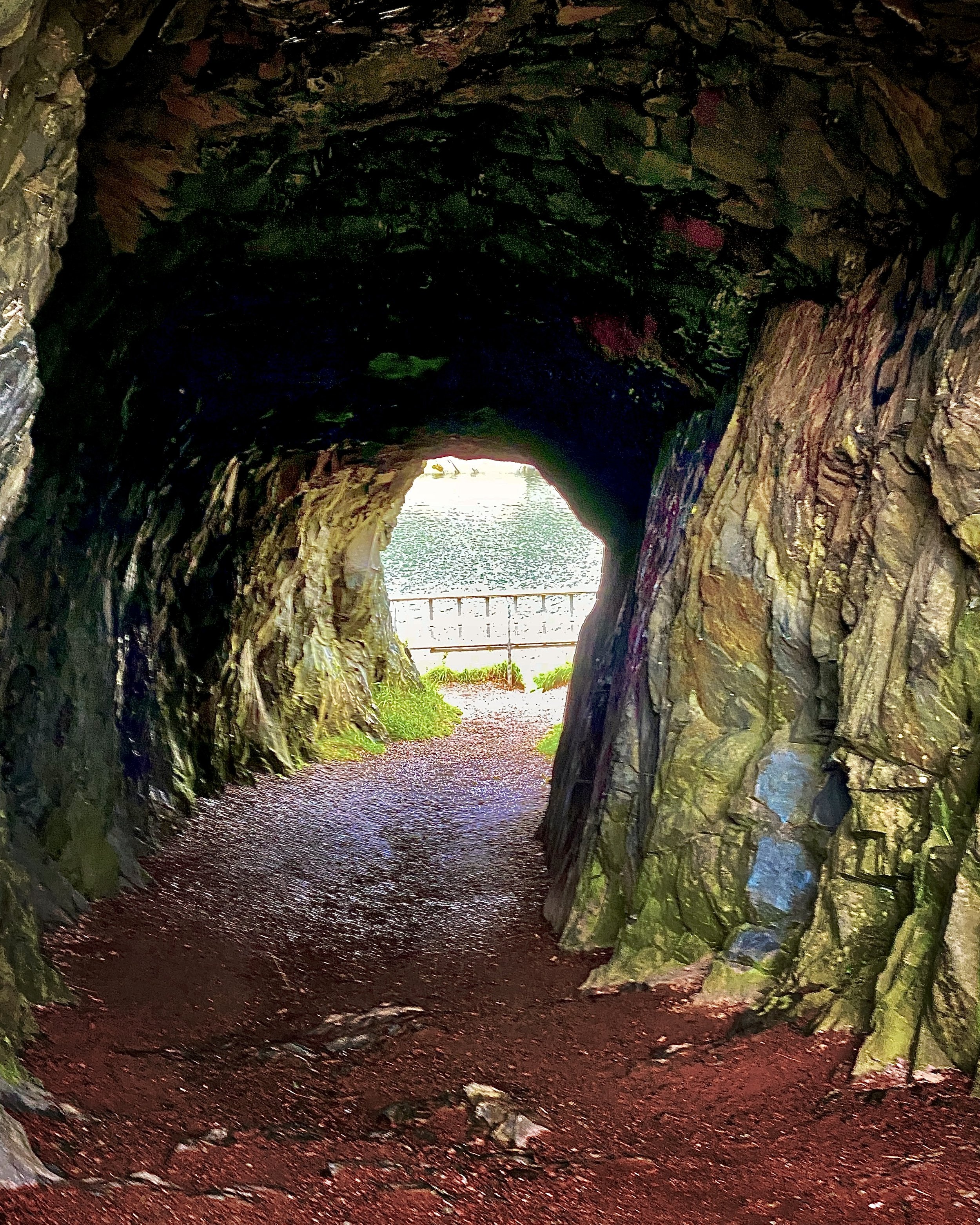Digging Into The Brigus Tunnel
The Brigus Tunnel
Brigus, founded in 1612, is not only one of the oldest English settlements in Newfoundland—it’s also one of the most beautiful.
The community is full of handsome old homes and well-built structures, echoing a time when rural Newfoundland was wealthier and more bustling.
And yet, for all the striking architecture, perhaps the most powerful symbol of Brigus’s prosperous past is a simple hole in the ground — the Brigus Tunnel.
What is the Brigus Tunnel?
The Brigus Tunnel is a 30-metre passage carved through a solid rock ridge. It measures roughly 3 metres high and 3 metres wide.
-
Abram Bartlett was born in Brigus in 1819 and rose to prominence through the seal hunt and the Labrador fishery. He was part-owner of the S.S. Panther and captained her for seventeen years, averaging an impressive annual haul of 8,439 seals. Each summer, he sailed the Panther to Turnavik, Labrador, where he ran a fishing enterprise under the name A. Bartlett and Sons. He died in 1889.
He was also the grandfather of renowned Arctic explorer Captain Bob Bartlett.
It was constructed in 1860 for Captain Abram Bartlett, who wanted easier access to his ship, the S.S. Panther.
At the time, Brigus was a busy port with many vessels crowding the harbour. In 1859, to secure a more accessible berth, Bartlett acquired land opposite Molly’s Island, adjacent to deep water. It was a great spot for docking — but it was surrounded by a 7-metre-high rock ridge, making unloading cargo a back-breaking task. Everything had to be hauled over the ridge by cart and wheelbarrow.
The tunnel was the solution. It created a short, level path to move cargo between the dock and the town.
Biulding the Tunnel
The tunnel was cut by John Hoskins, a Cornish miner likely employed at the Tilt Cove Copper Mine.
Inside the Brigus Tunnel
Hoskins built it during the summer of 1860 while Bartlett was away fishing in Labrador. Working entirely by hand, he drilled holes into the rock face and, years before Alfred Nobel’s invention of dynamite, packed them with gunpowder. After blasting the rock, he cleared the debris. By the time Bartlett returned, the tunnel was finished — and unloading the ship had become a much easier affair.
The tunnel remained in use until around 1910, when changes to the fishery made it obsolete.
The Tunnel Legacy
All along Newfoundland’s coast, there are traces of the historic cod fishery — but few altered the landscape as dramatically as the Brigus Tunnel, and few are as likely to endure.
When the tunnel was constructed, the cod fishery was at the heart of life in Newfoundland. Communities with good access to fish flourished. As the industry changed — and eventually collapsed — life changed, too. In 1884, during the tunnel’s heyday, Brigus had a population of 2,365. By 2016, it was less than a third of that (723), and life in Brigus looked very different.
Today, the Brigus Tunnel remains a reminder of a time when the Newfoundland fishery was strong enough to justify moving mountains.
Or it will — if people remember why it was really built.
The Tall-Tale Tunnel
As interesting as the true story is, it hasn’t stopped people from imagining more colourful origins for the Brigus Tunnel.
It’s easy to see why. Once the fishery declined, it may have seemed unlikely that anyone would go to such effort — blasting through solid rock — simply to make unloading cargo a bit easier. A 30-metre tunnel feels like the kind of thing that should have a more thrilling backstory. And so, over time, the myths began to take root.
By 1947 — less than 50 years after the tunnel had fallen out of use the Atlantic Guardian was already noting a shift in the narrative:
“A walk to the ‘Tunnel’ will bring to mind the doings of centuries ago as one remembers, according to tradition, the tunnel was used for the quick landing of contraband...”
It’s a story that still gets passed around — smugglers sneaking ashore under the cover of night, hauling casks of rum through a secret rock passage. The fact that the tunnel was built long after the golden age of smuggling seems to matter little. Some stories are just too good to fact-check.
St. George's Heritage Church, Brigus
Newfoundland and Labrador Tourism went even further, tying the tunnel to none other than pirate Peter Easton, suggesting it may offer a clue to Easton's long-lost treasure, hidden somewhere in the Brigus hills. Never mind that Easton was sailing these waters in the early 1600s, and the tunnel wasn't carved until 1860 — a gap of more than two centuries. The timeline doesn’t quite add up, but the story persists.
And really, who can blame anyone for wanting a bit of mystery in their town’s history? A tunnel through stone feels like the sort of place where treasure should be waiting — or at the very least, something a little more exciting than saltfish.
In the end, the real story is still the most remarkable: a tunnel built by hand, with gunpowder and grit, to support a way of life that defined Newfoundland for generations. It's not a tale of buried treasure — but it is a story of resourcefulness, hard work, and a reminder of a time when the fishery was strong enough to make men move mountains.
And that’s worth remembering.
-
Brigus, Decks Awash, March-April, 1986
Memories of Brigus, A.C. Hunter, Newfoundland Quarterly, 1972
Brigus, Encyclopedia of Newfoundland an Labrador.
Abram Bartlett, Encyclopedia of NL, Vol. 1.
Brigus by
John Northway Leamon, 2019, Flanker Press


